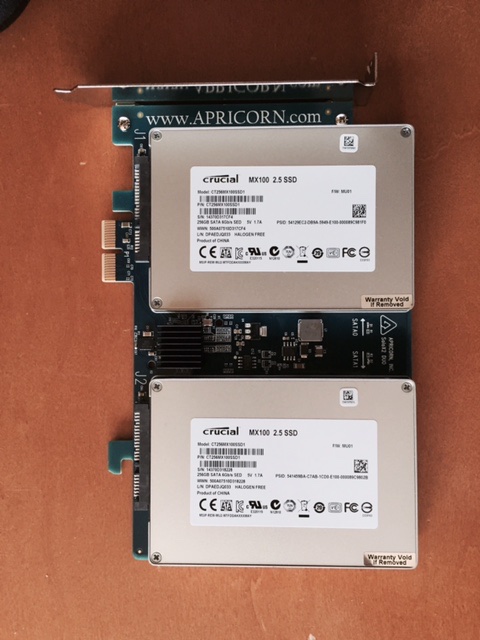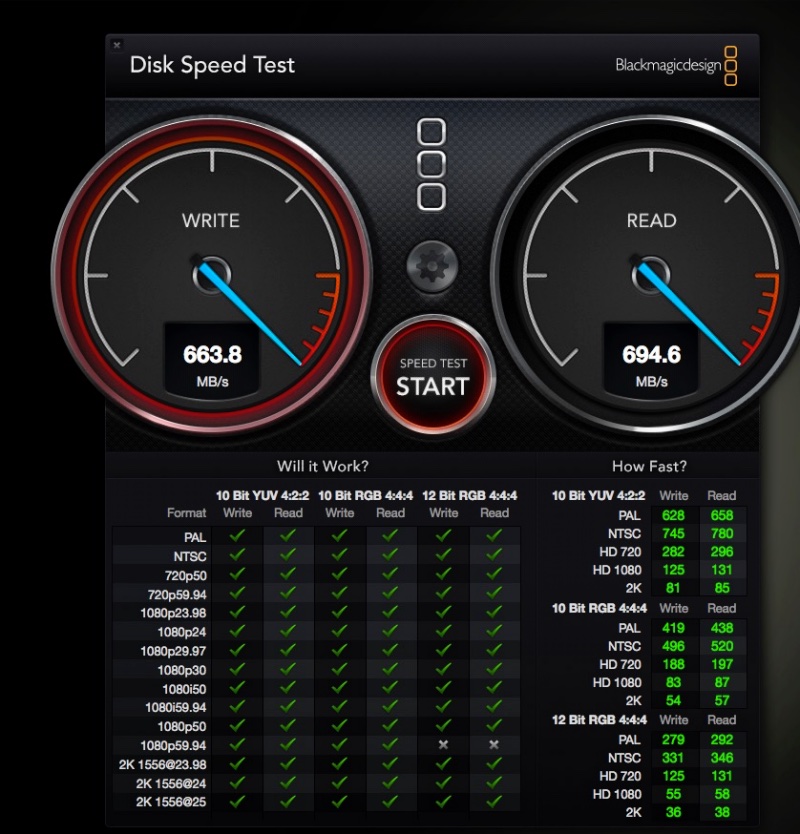Thunderbolt speeds for your storage.
For an index of all my Mac Pro articles, click here.
Thunderbolt is Intel’s technology for faster data movement between the Mac and storage drives. It also permits connection of displays.
Much has been made of the speed of TB in Apple’s marketing and it’s a technology which will never become available for classic Mac Pros as the required chips reside on the backplane board (motherboard) and cannot be added on a PCIe card. Thunderbolt requires costly external disk drive enclosures to work with the new cylindrical Mac Pro, also very costly.
But there’s a very simple solution for classic Mac Pro users seeking near-TB speeds and it comes from Apricorn in the guise of a dual SSD PCIe card.

Click the image.
Retailing at $140-150, plus the cost of two identical SSDs of your choice, assembly takes 3 minutes and installation in any PCIe slot in the Mac Pro a minute more. There are no cables to attach. Two status LEDs on the card glow green when all is well. PCIe allows the SSDs to run at SATAIII speed, which is twice the speed of the internal, dated SATAII drive slots in the Mac Pro.
This particular card was fitted with two Crucial MX100 256GB SSDs for a total cost of under $400, and set up in Disk Utility as a striped pair, meaning that both drives are written to simultaneously with disparate data streams, thus doubling the speed compared with a single drive. The drive pair is seen as one drive in Finder and should be regularly backed up, such backup being to the cheapest spinning drive handy. The OS and applications are moved to the Apricorn and the following speed test data were obtained:

Data are for a modestly spec’d single CPU Mac Pro with an X3690 3.46GHz CPU running just 8GB of 1333MHz RAM.
This compares with 715 and 791 for the new Mac Pro 2013 with 64GB of 1600MHz RAM and the D700 dual GPUs.
Expect 50 MB/s for a spinning HDD in a regular drive slot, maybe 150 MB/s for a single SSD in an internal drive slot and 300 MB/s for two SSDs in internal drive slots in a striped array. External USB2 drives measure 30-50 MB/s, USB3 some 75 MB/s. Clearly the speed gains here are very significant.
Thus for a very modest investment, you get 93% of the Read and 88% of the Write speed of a very costly new Mac Pro.
The ideal use for such a fast drive is for the OS and applications, of course, but for photographers processing very large layered files with frequent read/write activity, it’s an excellent temporary storage drive. Once processing concludes, the files can be moved to inexpensive spinning disks for long term storage.